Abstract
Multiple correlates and determinants of antisocial behavior within the home, community, and school are reviewed. Due to the school's pivotal role in our society, an emphasis is placed on how our schools contribute to antisocial behavior, and what educators can do to prevent anti-social behavior and related attendance problems. A variety of contextual factors and setting events within our schools appear to be major contributors to antisocial behavior, and some of the same factors identified within the schools also have been identified within the home. These setting events, rather than quick restrictive fixes, must be given more attention if we are to provide safe school environments—environments that durably prevent antisocial behavior and related attendance problems.
Keywords: school environment, violence prevention, setting events, antisocial behavior, school dropout prevention
Full text
PDF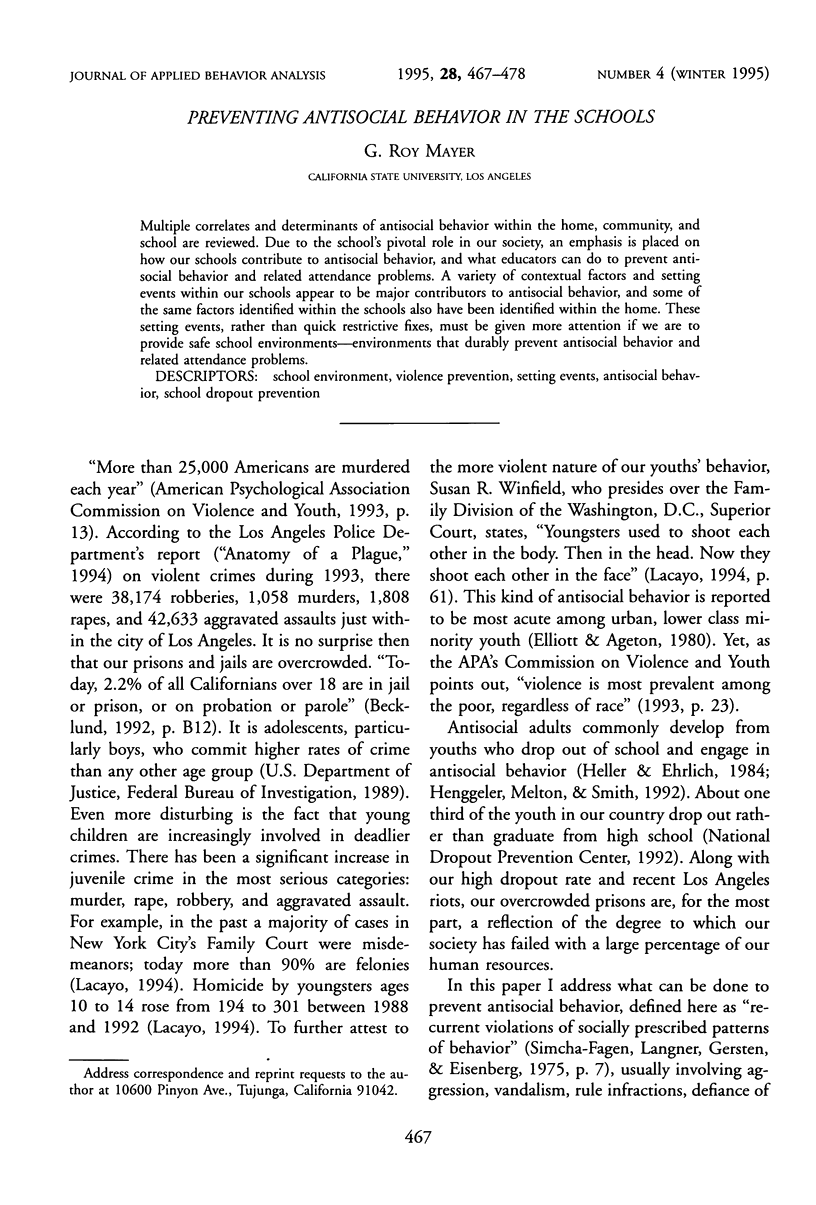

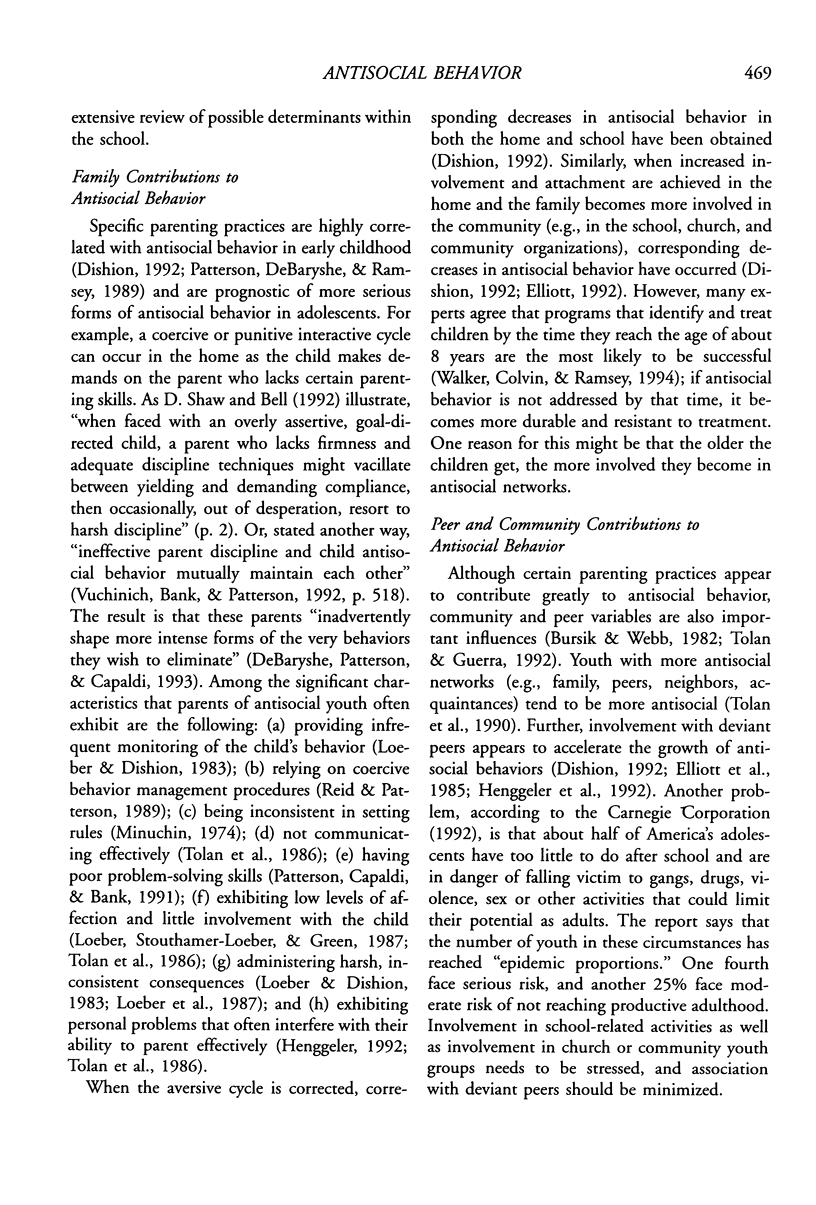
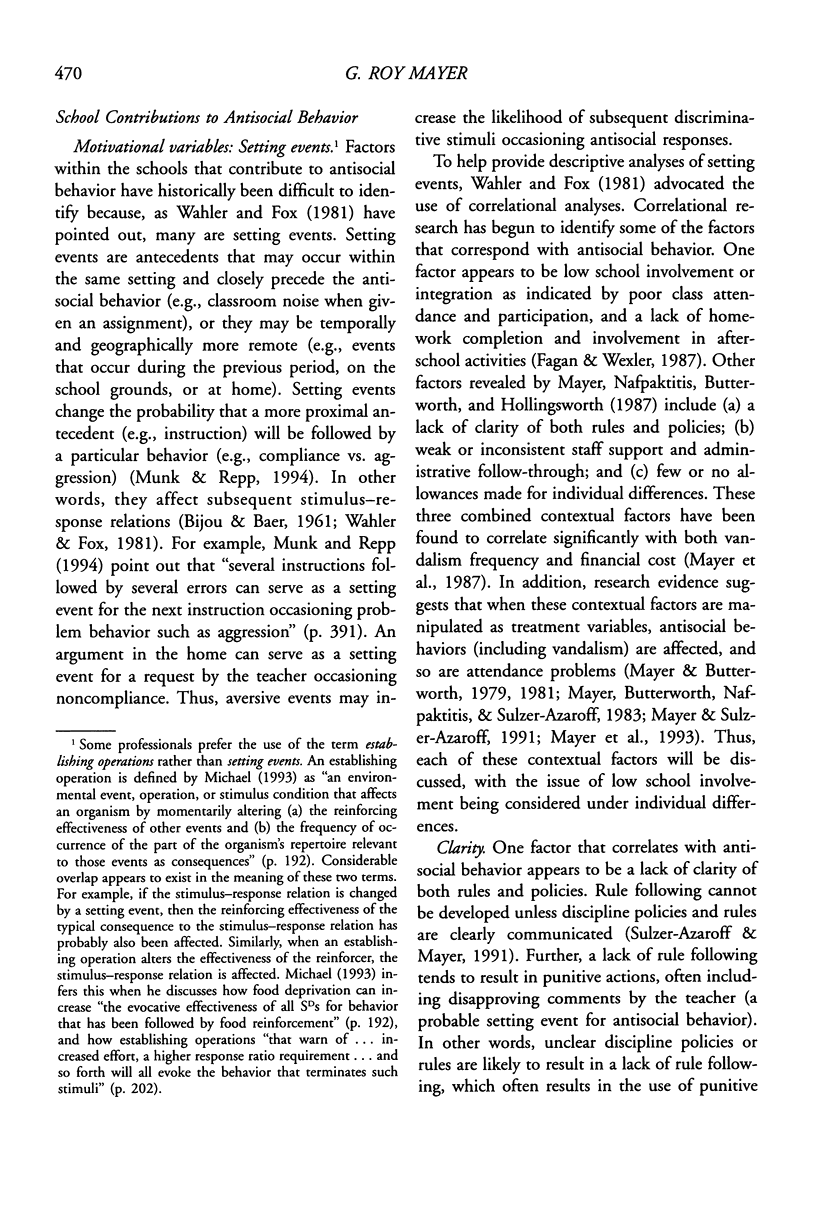
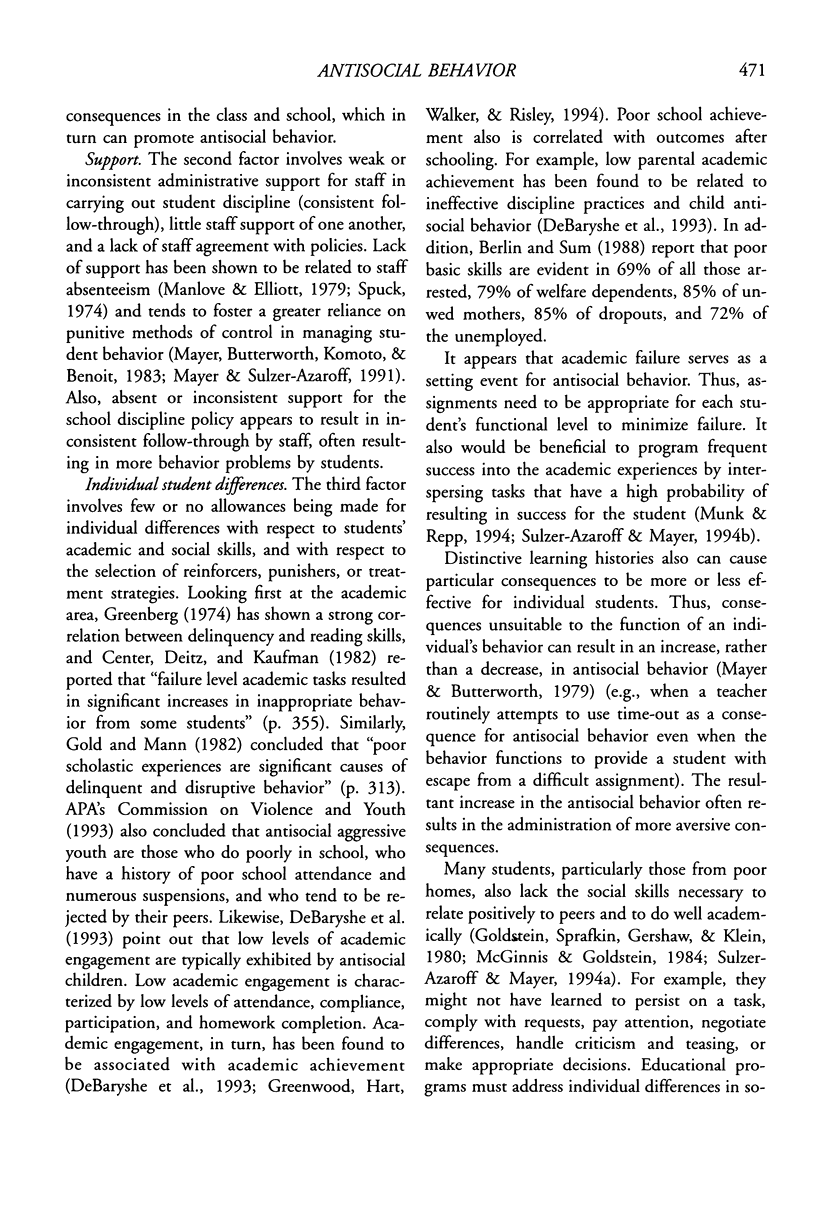
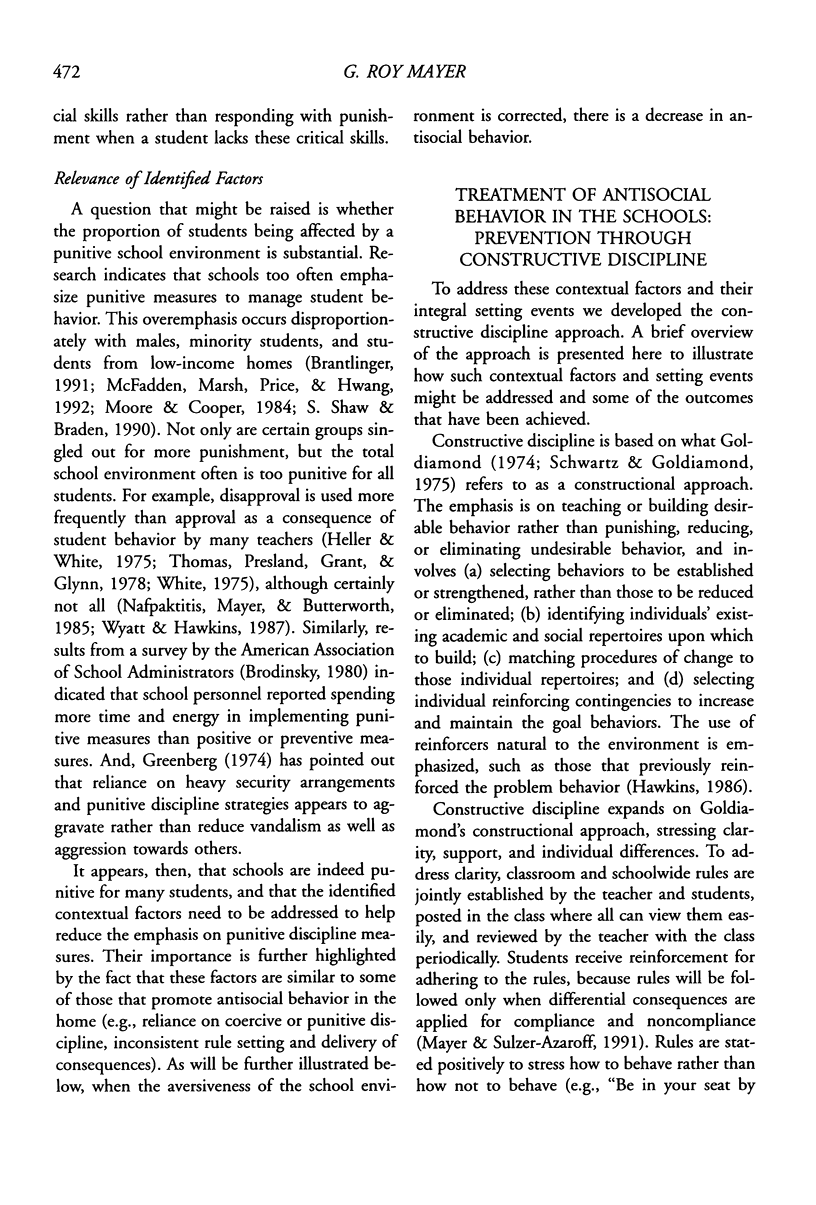
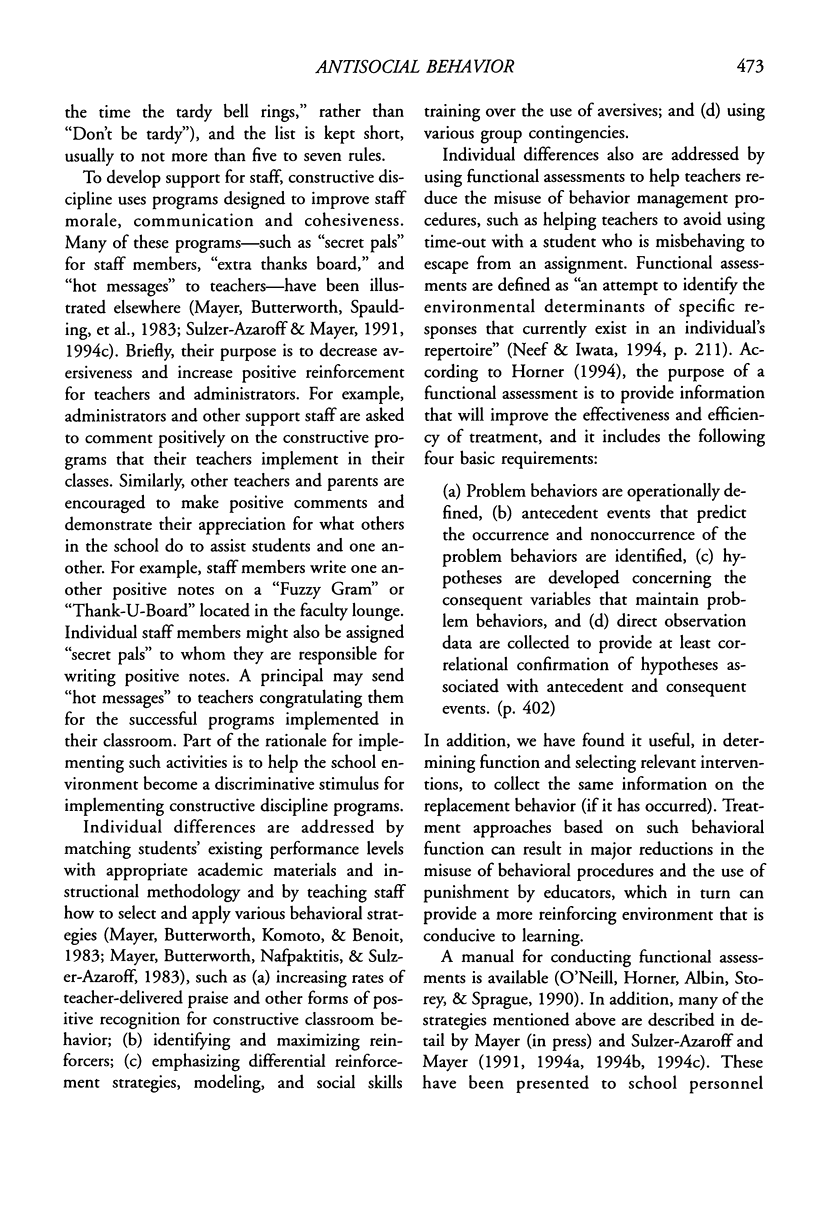
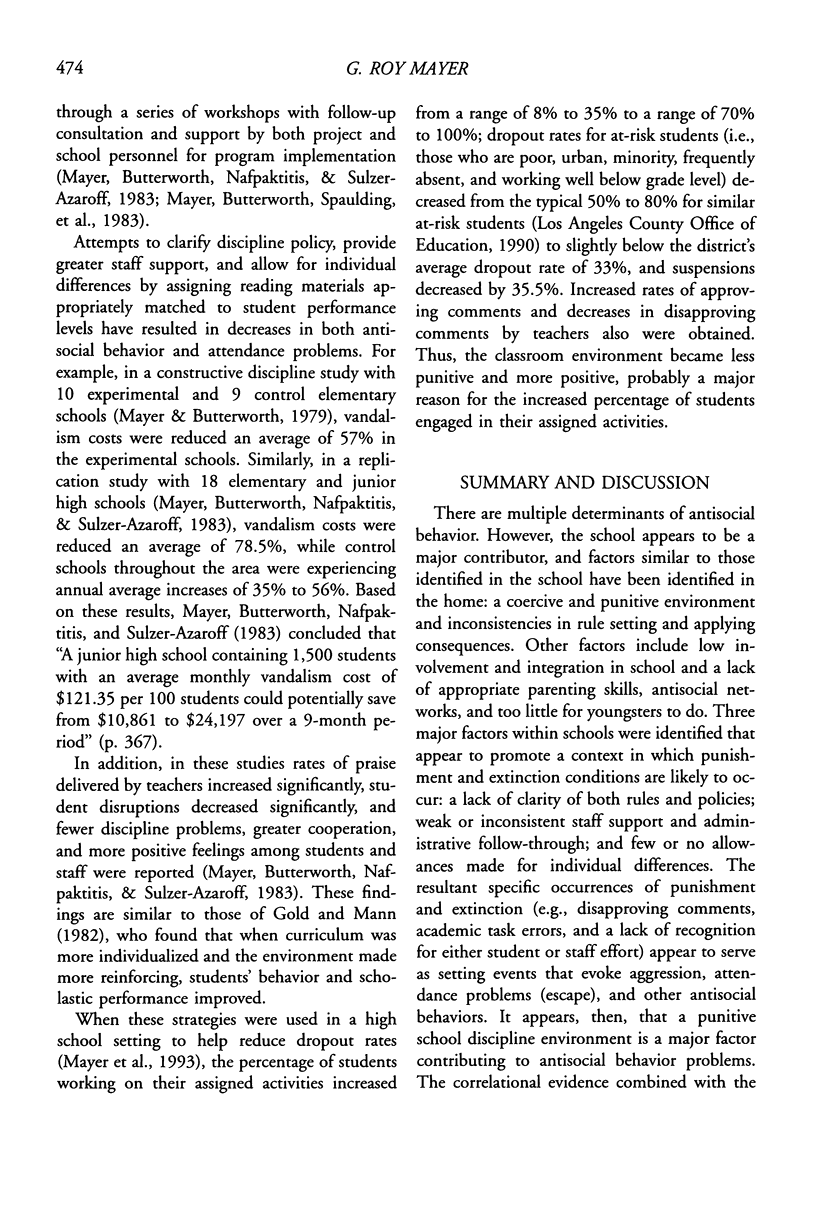
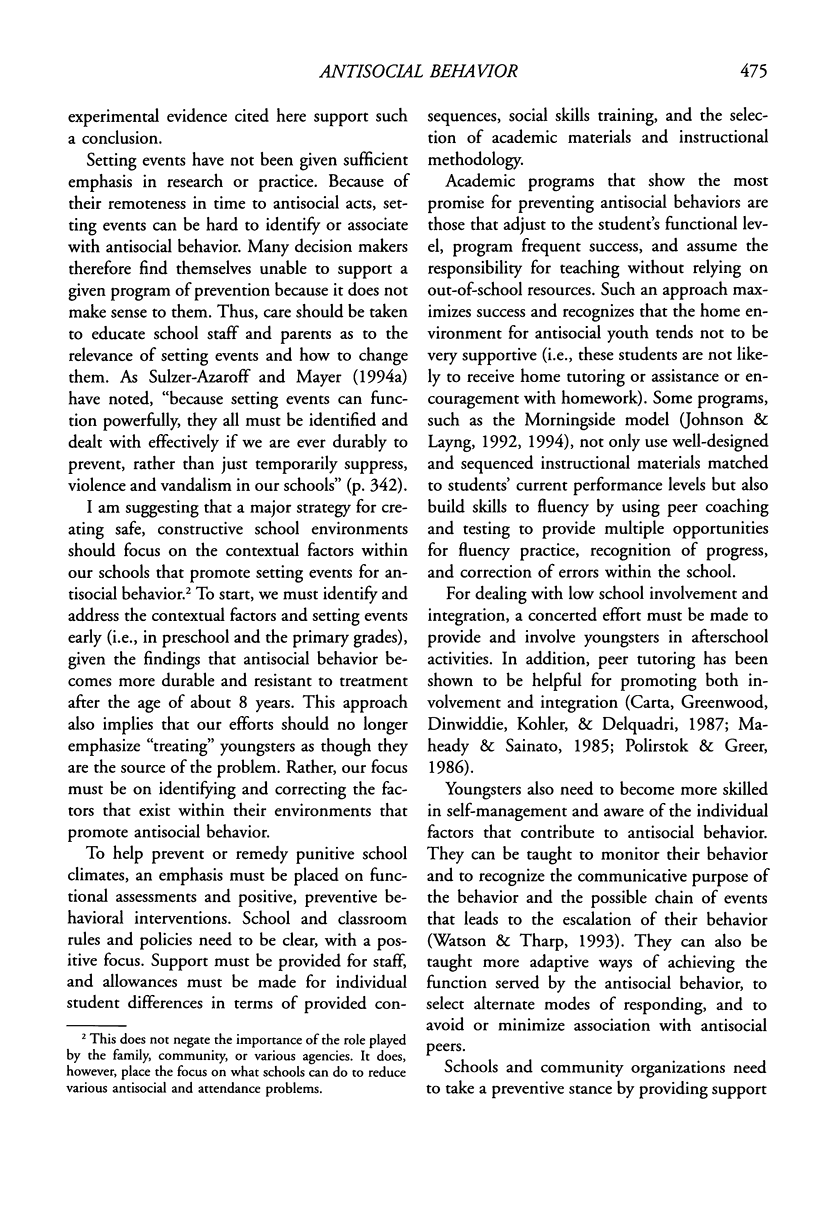
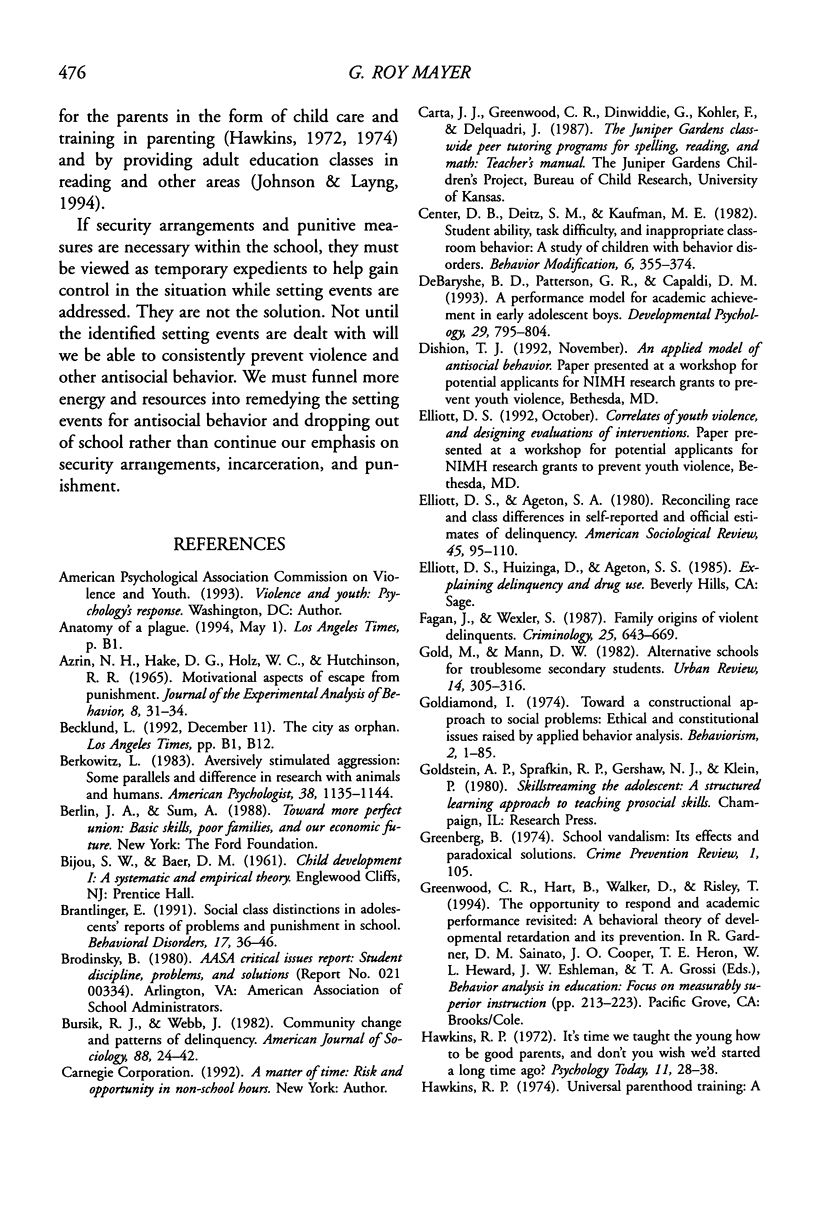


Selected References
These references are in PubMed. This may not be the complete list of references from this article.
- AZRIN N. H., HAKE D. F., HOLZ W. C., HUTCHINSON R. R. MOTIVATIONAL ASPECTS OF ESCAPE FROM PUNISHMENT. J Exp Anal Behav. 1965 Jan;8:31–44. doi: 10.1901/jeab.1965.8-31. [DOI] [PMC free article] [PubMed] [Google Scholar]
- Berkowitz L. Aversively stimulated aggression. Some parallels and differences in research with animals and humans. Am Psychol. 1983 Nov;38(11):1135–1144. doi: 10.1037//0003-066x.38.11.1135. [DOI] [PubMed] [Google Scholar]
- Goldiamond Israel. Toward a constructional approach to social problems: ethical and constitutional issues raised by applied behavior analysis. Behaviorism. 1974 Spring;2(1):1–84. [PubMed] [Google Scholar]
- Horner R. H. Functional assessment: Contributions and future directions. J Appl Behav Anal. 1994 Summer;27(2):401–404. doi: 10.1901/jaba.1994.27-401. [DOI] [PMC free article] [PubMed] [Google Scholar]
- Johnson K. R., Layng T. V. Breaking the structuralist barrier. Literacy and numeracy with fluency. Am Psychol. 1992 Nov;47(11):1475–1490. doi: 10.1037//0003-066x.47.11.1475. [DOI] [PubMed] [Google Scholar]
- Loeber R., Dishion T. Early predictors of male delinquency: a review. Psychol Bull. 1983 Jul;94(1):68–99. [PubMed] [Google Scholar]
- Mayer G. R., Butterworth T., Nafpaktitis M., Sulzer-Azaroff B. Preventing school vandalism and improving discipline: a three-year study. J Appl Behav Anal. 1983 Winter;16(4):355–369. doi: 10.1901/jaba.1983.16-355. [DOI] [PMC free article] [PubMed] [Google Scholar]
- Neef N. A. Current research on functional analysis methodologies: An introduction. J Appl Behav Anal. 1994 Summer;27(2):211–214. doi: 10.1901/jaba.1994.27-211. [DOI] [PMC free article] [PubMed] [Google Scholar]
- Patterson G. R., DeBaryshe B. D., Ramsey E. A developmental perspective on antisocial behavior. Am Psychol. 1989 Feb;44(2):329–335. doi: 10.1037//0003-066x.44.2.329. [DOI] [PubMed] [Google Scholar]
- Tolan P. H., Cromwell R. E., Brasswell M. Family therapy with delinquents: a critical review of the literature. Fam Process. 1986 Dec;25(4):619–649. doi: 10.1111/j.1545-5300.1986.00619.x. [DOI] [PubMed] [Google Scholar]
- Wahler R. G., Fox J. J. Setting events in applied behavior analysis: Toward a conceptual and methodological expansion. J Appl Behav Anal. 1981 Fall;14(3):327–338. doi: 10.1901/jaba.1981.14-327. [DOI] [PMC free article] [PubMed] [Google Scholar]
- White M. A. Natural rates of teacher approval and disapproval in the classroom. J Appl Behav Anal. 1975 Winter;8(4):367–372. doi: 10.1901/jaba.1975.8-367. [DOI] [PMC free article] [PubMed] [Google Scholar]


